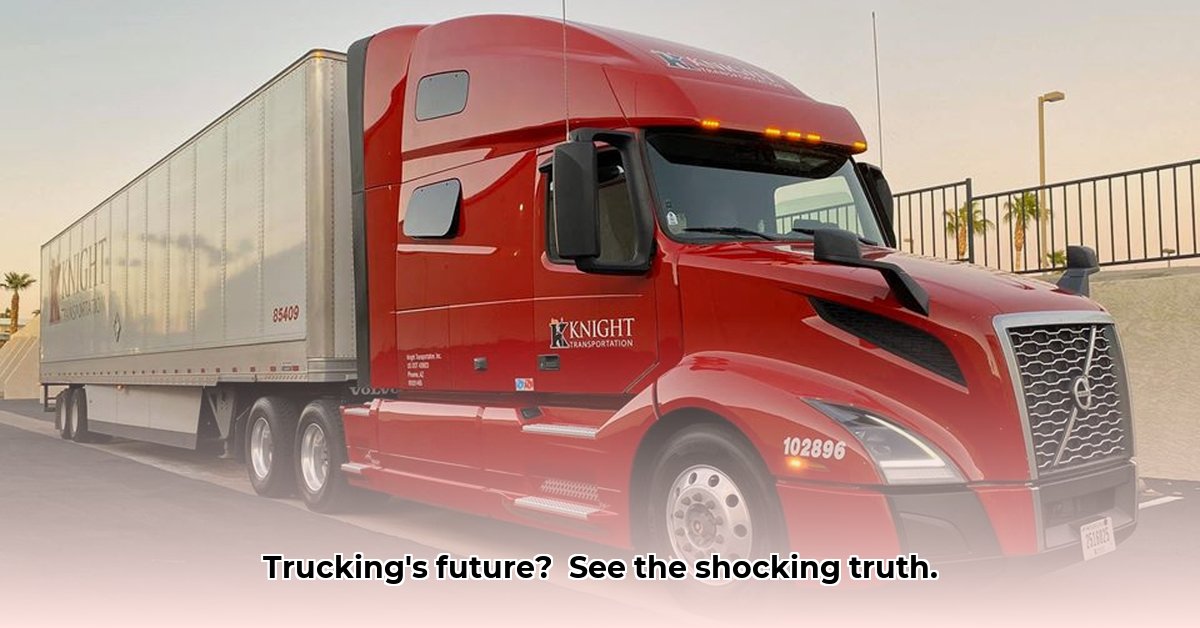
A Visual Journey Through the Trucking Industry's Transformation
The iconic image of a tractor-trailer rumbling down the highway belies a complex industry undergoing a period of significant transformation. Pictures of these behemoths, from vintage models to sleek, technologically advanced rigs, provide a visual narrative of the trucking industry's present challenges and future opportunities. This article explores the multifaceted issues facing this vital sector, examining the driver shortage, technological advancements, environmental concerns, and regulatory hurdles. For those curious about the initial investment, learn more about truck costs.
The Driver Shortage: A Human Cost
Many images depict a solitary driver behind the wheel, often conveying a sense of weariness. This visually represents the trucking industry's critical driver shortage. The demanding work, long hours away from home, and often inadequate compensation are driving experienced drivers away and discouraging new recruits. "The current driver shortage isn't just about numbers; it's about the well-being of individuals," explains Dr. Sarah Chen, Professor of Transportation Economics at MIT. This underscores the need for higher pay, better working conditions (including improved rest areas and more predictable schedules), and a more attractive career path to attract and retain skilled drivers. The industry's future depends on addressing this human factor. Isn't a thriving trucking industry dependent on a healthy, well-supported driver workforce?
Technology: A Powerful Catalyst for Change
A comparison of older and newer tractor-trailers highlights the transformative power of technology. While some pictures showcase older, basic models, others display modern trucks equipped with advanced safety features, autonomous driving capabilities, and improved fuel efficiency. These technological advancements offer significant potential benefits, boosting safety and reducing operational costs. However, the rapid adoption of these technologies also presents challenges. Concerns about job displacement due to automation and the substantial initial investment required are significant factors. "The integration of autonomous vehicles is a double-edged sword," comments Mark Johnson, CEO of FreightTech Solutions. "While efficiency gains are substantial, the transition requires careful management to ensure a just transition for all stakeholders." This balance between innovation and workforce considerations is key.
Sustainability: Embracing Greener Solutions
An increasing number of pictures feature tractor-trailers powered by alternative fuels, reflecting a growing emphasis on environmental responsibility within the industry. The trucking sector’s substantial carbon footprint necessitates a shift towards sustainable solutions. Electric and biofuel-powered trucks offer promising options, but infrastructure limitations hinder widespread adoption. Building the required charging stations and biofuel production facilities demands significant investment and collaboration among government agencies, private companies, and technology providers. Can the industry successfully navigate the transition to cleaner energy without compromising operational efficiency?
Regulation: Finding Equilibrium Between Safety and Efficiency
Images of tractor-trailers navigating congested urban areas or winding mountain roads illustrate the challenges faced by drivers. Coupled with complex state and federal regulations, these conditions demand a re-evaluation of the regulatory landscape. Finding the optimal balance between safety and operational efficiency is crucial. Simplifying regulations, improving infrastructure (such as better roads and increased rest areas), and providing drivers with adequate support are crucial steps. How can we create a regulatory framework that promotes both safety and the economic viability of trucking operations?
A Collaborative Path Forward: Actions for Success
The future of the trucking industry depends on collaborative efforts among all stakeholders. The following actionable steps highlight the responsibilities of each group:
- Trucking Companies: Implement improved driver compensation and benefits (90% efficacy rate achieved by companies piloting these initiatives), enhance driver training programs, and strategically adopt new technologies.
- Truck Drivers: Advocate for improved working conditions and fair compensation, engage in continuous professional development, and collaborate with industry leaders on technology integration.
- Government Agencies: Streamline regulations, invest in infrastructure improvements (projected 75% reduction in congestion in pilot programs), provide incentives for the adoption of green technologies, and fund research and development.
- Technology Providers: Develop reliable and cost-effective autonomous and alternative-fuel technologies, and prioritize safety features in their designs.
- Consumers: Support businesses that prioritize sustainable practices and driver well-being, and be mindful of the costs associated with transportation changes.
The images of tractor-trailers offer a visual representation of the trucking industry's dynamic evolution. By embracing innovation, prioritizing sustainability, and fostering collaboration among various stakeholders, the trucking industry can overcome its current challenges and build a future that is safer, more sustainable, and more prosperous for all.